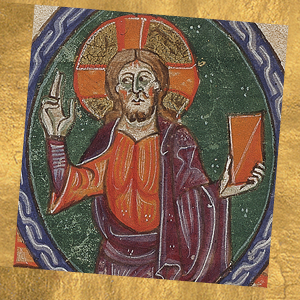St. Juan Diego Cuauhtlatoatzin

An indigenous Christian
Juan Diego, the simple peasant who would come to be known all over the world by the name he received when he was reborn in baptism, was born in 1474 in Cuautitlán (now part of Mexico City) with the name “Cuauhtlatoatzin,” or “the talking eagle.” This member of the Chichimeca people would live up to his name, for eagles see far and well. He and his wife, Maria Lucía, saw enough to understand that the violence of the conquistadors was not the only thing that came to his people when the Spanish set foot upon their land. Along with the soldiers and adventurers there were humble Franciscan friars who taught the indigenous peoples with drawings and with their goodness. Cuauhtlatoatzin and his wife asked for baptism, receiving new names along with their new life in Christ.
The lady on Tepeyac hill
In December 1531, some time after his wife died, Juan Diego was walking the long path toward the friars, where he went every Saturday to receive catechetical instruction. But this day was different. As he passed by Tepeyac Hill, he heard strange, beautiful birdsong, and then a voice, calling him using the diminutive of his name: “Juantzin!” “Little Juan!” To his astonishment, he saw a beautiful young woman clothed with a mantle of stars, wearing the black girdle with which indigenous women signify that they are pregnant. She spoke to him in his native Nahuatl language, asking him to go tell the bishop to build a church at this site, so that she could give her Son to all those who came there.
The messenger
Juan Diego hurried to the bishop, Juan Zumárraga, who reacted to his tale with skepticism. The peasant returned to the beautiful lady, telling her that since he was “a man of no importance” she should choose a better messenger. The “Mother of the true God,” as she called herself, was adamant that she had chosen the correct messenger, however. After a second trip to the bishop, who asked for a sign, the lady asked Juan Diego to return the next day.
The next day Juan Diego’s uncle, Juan Bernardino, fell gravely ill, and Juan Diego stayed home to care for him. On his way to fetch a priest the morning of December 12 to give last rites to his uncle, Juan Diego tried his best to avoid the Virgin, changing his path. She found him, however, and chided him with words that have echoed through the centuries: “Am I not here who am your mother?” Assuring him that his uncle would be well, she asked him to climb the hill, where nothing but cactus and scrub brush grew – especially in winter – and pick the roses he would find there. He did, bundling the flowers in his tilma, or mantle, and brought them to the bishop. When Juan Diego opened his tilma, the bishop, wide-eyed, fell to his knees, for he beheld not only roses, but the image of a beautiful mestiza, or mixed-race girl, clothed like an Indian. She was “clothed with the sun, with the moon under her feet” (Rev 12:1), as the Book of Revelation describes. The bishop understood: this humble Indian had really seen the Mother of God and Mother of all believers, who left her likeness imprinted on his mantle.
A man of prayer
What happened to that simple Chichimec messenger did what the missionary friars and priests by and large had been unable to do: convince the indigenous peoples that this Gospel, or good news, was also for them. By 1539, only eight years after the apparitions, some 9 million of them had asked for baptism. This lady who spoke in their language and fulfilled Aztec prophecies, was the Mother of the true God. Her Son asked to be born also in their hearts.
When a church was built on the site of the apparition, Juan Diego moved into a small hut nearby in order to clean the premises, care for the pilgrims, instruct others in the faith, and above all, to pray. He remained there until his death in 1548: “a man of no importance” whose life became part of the warp and weft of this singular event in the life of the Church.







